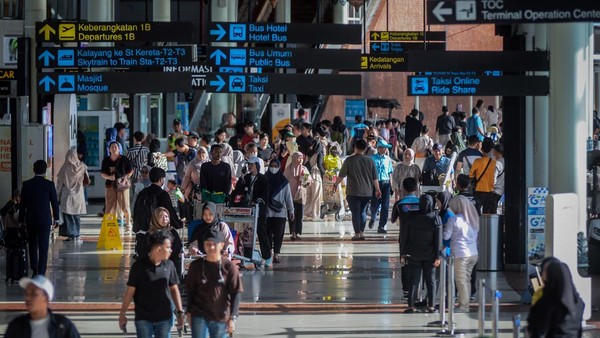The annual exodus during Lebaran, known as 'mudik,' is a significant event in Indonesia, with millions traveling to reunite with family. In 2025, Soekarno-Hatta International Airport experienced a remarkable increase in passenger numbers, reflecting the nation's robust recovery and the enduring importance of this tradition.
Unprecedented Passenger Numbers During Lebaran
During the 2025 Lebaran period, Soekarno-Hatta International Airport reported a staggering 2.7 million passengers. This figure represents approximately 70% of the projected 3.6 million travelers for the season. Agus Haryadi, CEO Regional I of PT Angkasa Pura Indonesia (InJourney Airports), expressed optimism about reaching the target, citing ongoing data collection and the potential for numbers to exceed initial estimates.
Factors Contributing to the Surge
Several elements contributed to this significant uptick in passenger traffic:
- Government Initiatives: The government's efforts to reduce airfare during the Lebaran period made air travel more accessible to a broader segment of the population.
- Economic Recovery: Indonesia's post-pandemic economic rebound bolstered consumer confidence, encouraging more individuals to travel.
- Operational Enhancements: The addition of 17 new flight routes by 10 airlines across nine airports managed by InJourney Airports expanded connectivity and options for travelers.
Daily Passenger Movements and Peak Periods
Daily passenger movements at Soekarno-Hatta Airport reached up to 122,000 individuals. The peak of the return flow was projected to see numbers as high as 192,000 passengers in a single day. These figures underscore the airport's critical role as a central hub during the festive season.
Comparative Analysis with Previous Years
The 2025 figures indicate a 6.5% growth compared to 2024, highlighting a positive trajectory in air travel. When juxtaposed with pre-pandemic levels, the recovery rate stands at 14.1%, showcasing the resilience and adaptability of Indonesia's aviation sector.
Strategic Measures for Efficient Operations
To manage the surge effectively, several strategies were implemented:
- Resource Allocation: Over 7,000 personnel, including Aviation Security (Avsec), customer service representatives, and Air Traffic Control (ATC) staff, were deployed to ensure smooth operations.
- Facility Upgrades: Continuous improvements to airport facilities, such as waiting areas and restrooms, enhanced passenger comfort and streamlined movement.
- Collaborative Efforts: Coordination with various stakeholders, including airlines and government agencies, facilitated a unified approach to managing the increased traffic.
Implications for Indonesia's Aviation Industry
The surge in passenger numbers during Lebaran 2025 has several implications:
- Economic Boost: Increased air travel contributes significantly to the national economy, benefiting airlines, airport operators, and ancillary services.
- Infrastructure Demand: The rising number of travelers underscores the need for continuous infrastructure development to accommodate future growth.
- Policy Considerations: The success of government initiatives in promoting travel affordability may inform future policies aimed at stimulating the aviation sector.
Future Outlook
Looking ahead, the focus will be on sustaining growth and enhancing passenger experience. Investments in technology, infrastructure, and human resources will be pivotal in positioning Soekarno-Hatta Airport as a leading hub in the region. Additionally, fostering partnerships with international carriers and exploring new routes can further expand connectivity and attract more travelers.
In conclusion, the 2025 Lebaran period at Soekarno-Hatta International Airport exemplifies Indonesia's recovery and the enduring significance of 'mudik.' Through strategic initiatives and collaborative efforts, the airport successfully managed a substantial increase in passenger traffic, setting a positive precedent for future festive seasons.
Read More






 Thursday, 27-11-25
Thursday, 27-11-25







